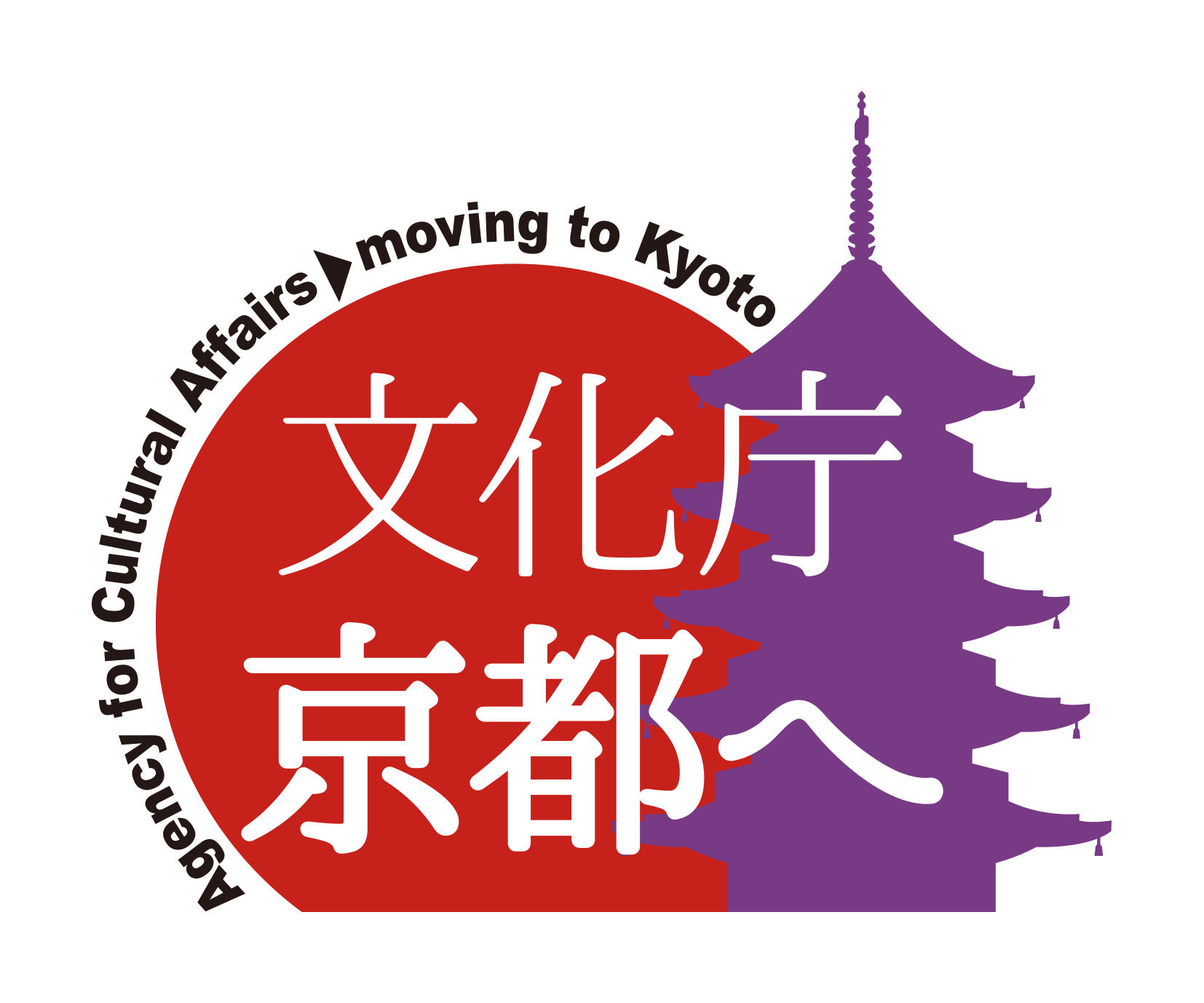Here, we will report on the class and the activities of the students at Kyoto Sangyo University, × Kamigamo Shrine “Kyoto’s World Heritage PBL ~Transmitting the charm of Kamigamo Shrine from a student’s point of view~” (in charge: Prof. Masashi Wakamatsu).
In addition, the students of this class have opened Facebook and Twitter.
You may also be interested in this topic.
Kamigamo Shrine × Kyoto Sangyo University Class Facebook
Kamigamo Shrine × Kyoto Sangyo University Class Twitter
Kamo Water Festival
On Sunday, July 26, the “Kamo Water Festival” was held at Kamigamo Shrine. This class has been working together since April to prepare for this water festival, and now it’s time for the actual event.
In this class, we planned “Flowing Somen Noodles”, “Large-Format Hyakunin Ichishu”, “Tea Ceremony”, and “Votive Performance (joint project with Kamigamo Shrine)” during the water festival.
Flowing somen noodles, 100 people and 100 heads
The somen noodles were made in the square in front of the second torii gate of Kamigamo Shrine. The students are also dressed in kimono, and they are well prepared and enthusiastic. In addition, for the set of flowing somen noodles, we used authentic ones provided by the “World Flowing Somen Association”, such as an 8-meter bamboo tube. On the day of the event, with the help of the staff of the Flowing Somen Association, we provided authentic somen noodles in both name and reality. There were many difficulties in implementing the somen noodles. The students have taken the lead in coordinating with all kinds of people, such as requesting cooperation from the World Drift Somen Association, coordinating and notifying public health centers due to the relationship between handling food, and coordinating with shrines to use fire. Perhaps because of the high temperature on the day, there was a long line and there was a waiting time. Regardless of age or gender, foreign tourists also participated, sipping somen noodles deliciously.
In the space next to the somen noodles, we did a large-format 100 people and one head. Hyakunin Ichishu is handmade with a focus on phrases related to Kamigamo Shrine and water. There was a lot of excitement around the children who were waiting for their turn to make somen noodles.
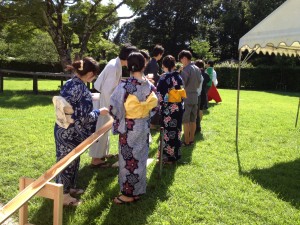
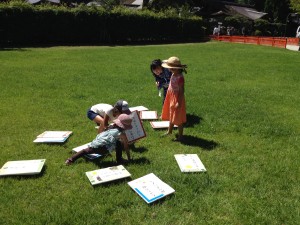
Tea ceremony and votive performance
After the somen noodles, it is a tea ceremony in the temple grounds. The tea ceremony was held on the east side of Tsuchiya. There is a stream flowing right next to your seat, and it is a perfect place to have a cup of tea. Under the guidance of the teacher of Omotesenke, the tea at this tea ceremony is authentic and unique to Kamigamo Shrine using water from Kamiyama. We offered tea and a set of tea, and although we didn’t reach our target sales number, we seemed to be satisfied with the people who ate it.
At the same time, a votive performance was held in front of the bridge hall and the small hall in the temple grounds. For the votive performance, the main class and the Kamigamo Shrine coordinated the performance groups. For this class, we approached a performance group, mainly a circle of university students, and we proceeded with it while consulting with Kamigamo Shrine to see if it would fit the atmosphere of the shrine and festival. When the performance started, many people stopped and listened intently.
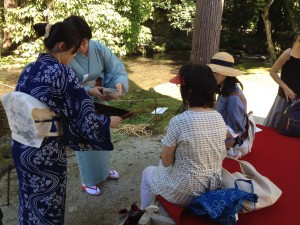
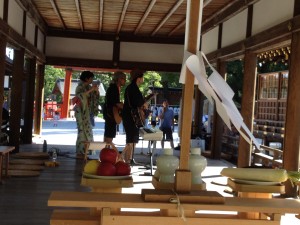
Participation in shrine events
The climax of the water festival is a pilgrimage to the precincts of the Ema Shrine. The students of this class, mainly male students, also carried the shrine and went around the temple grounds. For the students who carried the shrine, it was a very valuable opportunity that they would not normally be able to experience.
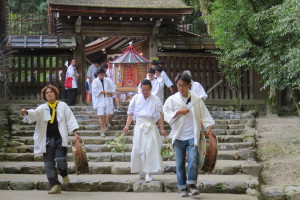
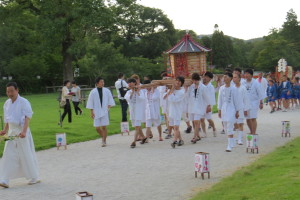
Activities after the Water Festival
After the water festival, we held a meeting with Kamigamo Shrine at a later date, and based on the meeting, we held a review meeting. Based on this review meeting and reflection meeting, we will proceed with preparations for the interim presentation and the presentation of the results.
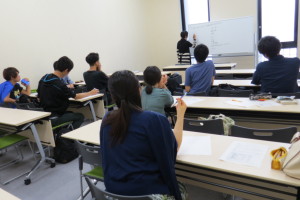
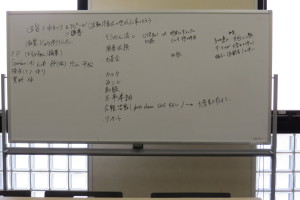
Last meeting with Kamigamo Shrine
On Saturday, July 11, a meeting was held between the students and the people involved in Kamigamo Shrine.
This will be the last meeting with Kamigamo Shrine for the water festival < Sunday, July 26 >. At the meeting, we explained and confirmed the details of the events that each student was in charge of, such as the preparation for the day of the event, the explanation of the schedule and confirmation of precautions from setting up to the day of the event, event management, and withdrawal. Projects conducted by students include somen noodles, tea ceremonies, and dedication of performances. Please see the poster for the planning and schedule of the event.
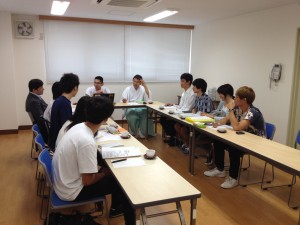
After the meeting, we went out to the precincts and previewed the places where each event would be held. During the preview, while observing the actual site, we exchanged opinions on the simulation of the setup and the conductors of the participants.
The results of the PBL learning and activities that have been carried out over the past four months will finally be put to the test.
We hope you will visit Kamigamo Shrine on Sunday, July 26 and participate in the new “Water Festival”!
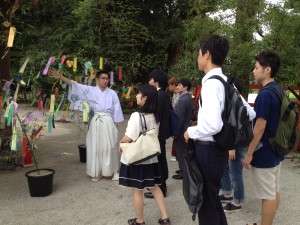
Click here for the poster of the Water Festival
We will also hold a Kamigamo Shrine PHOTO SHARE WEEK using Twitter.
For details, please see the special Facebook page of this class.
You can also watch an introductory video of Kamigamo Shrine created by the students.
Visit to Kamigamo Shrine & Meeting
This class is based on the theme of revitalizing the Water Festival, one of the official events of Kamigamo Shrine. The “Water Festival” is scheduled to be held on Sunday, July 26, and as the actual event approaches, the activities of the class are becoming more active.
Visited on May 30
On the morning of Saturday, May 30, before the opening ceremony and orientation of the Kyoto World Heritage PBL course began, Professor Wakamatsu’s class visited Kamigamo Shrine to tour the precincts of the water festival and to have a meeting with the shrine staff.
During the tour of the precincts, we first visited the Gonden, which we were unable to visit due to other events when we visited in April, and then we were briefed on the details of the contents and purpose of the Water Festival at Shingu Shrine, which is one of the stages of the Water Festival. After that, we observed the “Dance of the Priestess” that is actually performed at the “Water Festival”.
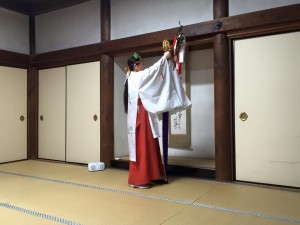
After that, we had a meeting with the shrine staff and proposed a draft plan and idea for the event to be held at the “Water Festival” that the students had been thinking about so far, and confirmed the feasibility. The shrine gave us advice on each of the proposals, including whether or not they could be implemented and the issues that could be addressed if they were to be implemented. While the direction of the event to be held at the Water Festival has become clear, there is still room for consideration before it can be realized, and it was decided to reorganize the contents of the proposal and discuss it with Kamigamo Shrine on a new date.
After participating in the opening ceremony in the afternoon, the students held a review meeting in the evening to confirm the issues and roles for the next meeting, and to summarize and report the results before the next class.
Visited June 13
On Saturday, June 13, classes were originally scheduled to be held at Campus Plaza Kyoto, but the schedule was changed and discussions were held at Kamigamo Shrine. Since the last meeting (May 30), the students have been conducting activities and surveys according to their roles. This time, before the consultation with the shrine, we had a meeting with Dr. Wakamatsu to share our activities and surveys so far and to confirm the items to be discussed with the shrine.
At the meeting with the shrine, we exchanged opinions on the events to be held at the Water Festival, continuing from the previous meeting. In addition, in response to requests from the shrine, we decided to conduct a questionnaire for university students and worshippers.
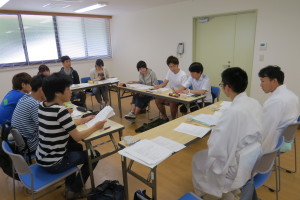
In addition, since the meeting on May 30, the student in charge of public relations has set up Twitter and Facebook to spread the word about the Water Festival, and has been using social media to disseminate information.
There is only one and a half months left until the “Water Festival”. The activities of the students have also been in full swing.
Interview Training
On Saturday, May 9, we invited former NHK announcer Yoshihiro Mori as a lecturer and conducted an interview training in collaboration with Professor Uno of Kyoto City University of Arts, who is conducting classes at Toji Temple. Interviews with people involved in World Heritage sites and local people are very important in order to deepen our understanding of the World Heritage sites that take place in the process, and in the process of discovering problems and establishing hypotheses for solutions. According to Mr. Mori, of the many jobs of an announcer, interviews are one of the most difficult. In the limited time of 90 minutes, he explained in an easy-to-understand manner with his own experience about how to prepare for an interview, the necessary preparations, and interview techniques that even beginners can use.
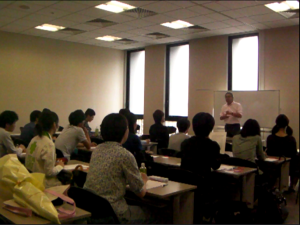
The students listened attentively to Mr. Mori’s enthusiastic lecture and took notes.
After the interview training, a student-led meeting was held under the advice of Prof. Wakamatsu. At the meeting, there was a report on the out-of-class activities that have been carried out so far and a discussion on the activities until the next class. The division of roles such as leaders, records, liaison, and public relations was decided, and lively discussions were held on measures to revitalize the Water Festival, including confirmation of the purpose, methods of publicity, content of the event, and cost issues.
Even though it was the second time the students had met each other, they seemed to have already gotten to know each other, and the class was held in a very good atmosphere.
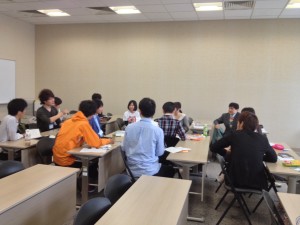
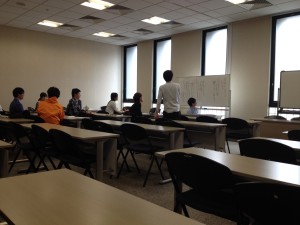
1st class ~ First visit to Kamigamo Shrine
On Saturday, April 18th, Professor Wakamatsu of Kyoto Sangyo University, who will be working at Kamigamo Shrine, started his class.
In the morning, classes were held at Campus Plaza Kyoto. Prof. Wakamatsu said that he would like to conduct this new class utilizing Kyoto’s World Heritage Site as if it were a seminar that goes beyond the university, and gave a lecture on the history of Kamigamo Shrine, annual events, and the relationship between Kamigamo Shrine and Shimogamo Shrine. The students hit it off with each other through icebreakers and self-introductions, and they immediately exchanged contact information using SNS.
In the afternoon, the class was moved to Kamigamo Shrine. After visiting the main shrine with all the students, they toured the precincts under the guidance of Haruyama Gonnoyoshi of Kamigamo Shrine. During the tour, Mr. Gonnogi gave us a detailed explanation of the tradition of the standing sand in front of the famous Hosoden, the introduction of the Kataoka Shrine, which is related to matchmaking, which is said to have been passed by Murasaki Shikibu, the “Nara no Ogawa” and the “Water Festival” that are the stage of the “Kamo Water Festival”, which are the themes of this course, and the “Shingu Shrine” dedicated to the dragon god who controls water, etc., and deepened our understanding of Kamigamo Shrine.
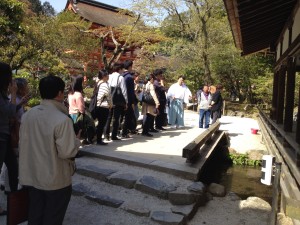
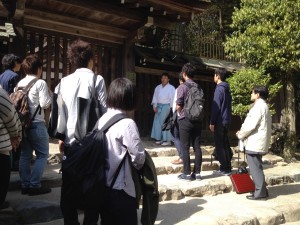
This year is also an important year for Kamigamo Shrine as the ceremonial relocation of the shrine is carried out. The people involved in the shrine had high hopes that the participation of the students would make the “water festival” more meaningful than usual, involving the local community.
Inquiries
University Consortium Kyoto Credit Transfer Project
TEL 075-353-9120 FAX 075-353-9121
〒600-8216 Shimogyo-ku, Kyoto-shi, Nishitoin-dori, Shiokoji, Shimo-ku, Kyoto, Campus Plaza Kyoto
* Reception hours: Tuesday ~ Saturday 9:00 ~ 17:00 (excluding year-end and New Year holidays)
















